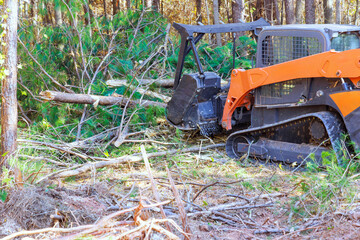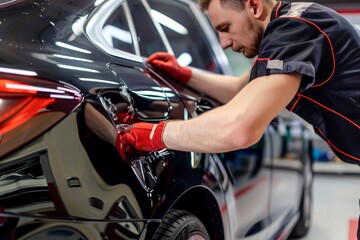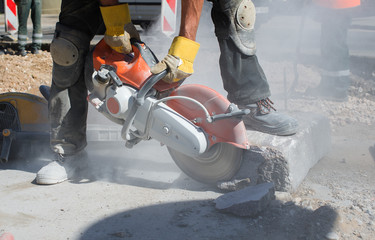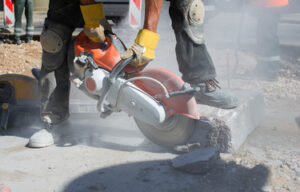Forestry Mulching Austin is an effective land-clearing method that enhances soil health and promotes better land management. This process involves using specialized machinery to cut, grind, and clear vegetation such as trees, shrubs, and underbrush, leaving behind a layer of organic mulch.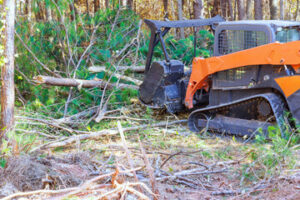
Unlike traditional land-clearing methods, forestry mulching offers an environmentally friendly solution by recycling the cleared vegetation directly into the soil. The resulting mulch helps to prevent soil erosion, retain moisture, and improve overall soil quality, making the land more suitable for agricultural, recreational, and construction purposes.
Forestry mulching is widely used for land restoration, wildfire prevention, and improving the aesthetic appeal of outdoor spaces.
One of the main advantages of forestry mulching is its efficiency in land clearing. Traditional methods such as bulldozing and burning can be time-consuming, expensive, and environmentally harmful. In contrast, forestry mulching allows for quick and precise clearing of vegetation without the need for additional cleanup or debris removal. The machinery used in forestry mulching is designed to handle various types of vegetation, from small brush to large trees, grinding them into fine mulch that is evenly distributed across the cleared area. This eliminates the need for hauling away debris or burning it, reducing environmental impact and minimizing costs associated with waste disposal.
Forestry mulching also contributes to better soil health by creating a protective layer of mulch that enriches the soil with organic matter. The mulch decomposes over time, releasing essential nutrients into the soil and improving its structure. This promotes healthier plant growth and increases the land’s capacity to support vegetation. The mulch layer also helps to retain moisture in the soil, reducing the need for frequent watering and protecting plants from drought stress. Additionally, the organic material from the mulch enhances microbial activity in the soil, supporting a balanced ecosystem and fostering the growth of native plant species.
Another significant benefit of forestry mulching is its ability to prevent soil erosion and improve land stability. Bare soil is highly vulnerable to erosion caused by wind and water, which can lead to loss of valuable topsoil and damage to the landscape. The layer of mulch left behind after forestry mulching acts as a protective barrier, holding the soil in place and reducing runoff. This helps to maintain the integrity of the land and prevents sediment from entering nearby water sources. By stabilizing the soil, forestry mulching supports the growth of new vegetation and promotes long-term land health.
Forestry mulching is also an effective method for controlling invasive plant species and promoting the growth of native vegetation. Invasive plants often outcompete native species for resources, disrupting the natural balance of the ecosystem. Forestry mulching removes these invasive plants at the root level, preventing them from regrowing and spreading. The mulch left behind creates favorable conditions for native plants to thrive by improving soil quality and reducing competition for sunlight and nutrients. This helps to restore the natural biodiversity of the area and supports a healthier and more resilient ecosystem.
In addition to its environmental benefits, forestry mulching enhances the visual appeal of a property by creating a clean and well-maintained landscape. Overgrown vegetation and cluttered underbrush can make a property look neglected and uninviting. Forestry mulching clears away this excess growth, opening up the landscape and improving sightlines. The uniform layer of mulch left behind creates a neat and organized appearance, enhancing the overall aesthetic of the property. This is particularly beneficial for properties being prepared for sale or development, as a well-maintained landscape increases property value and attracts potential buyers.
Forestry mulching also plays a critical role in wildfire prevention and management. Overgrown vegetation and dry underbrush create fuel for wildfires, increasing the risk of fire outbreaks and making them more difficult to control. Forestry mulching reduces this risk by removing excess vegetation and creating firebreaks that limit the spread of flames. The layer of mulch left behind retains moisture and reduces the flammability of the cleared area, further decreasing the risk of fire. This helps to protect structures, natural habitats, and human life from the devastating effects of wildfires.
Another advantage of forestry mulching is its versatility in handling different types of terrain and vegetation. The machinery used in forestry mulching is designed to operate on various land conditions, including uneven ground, rocky soil, and steep slopes. This allows for effective clearing of difficult-to-reach areas that may be inaccessible to other land-clearing methods. The equipment can handle a wide range of vegetation, from dense brush and small saplings to mature trees, making it suitable for projects of all sizes. The flexibility of forestry mulching makes it an ideal solution for residential, commercial, agricultural, and conservation projects.
Forestry mulching is also a cost-effective land-clearing solution. Traditional methods of land clearing, such as bulldozing and hauling away debris, can be labor-intensive and expensive. Forestry mulching streamlines the process by combining cutting, grinding, and mulching into a single operation. This reduces labor costs, equipment expenses, and disposal fees. The mulch left behind also reduces the need for additional soil amendments and erosion control measures, further lowering overall project costs. The long-term benefits of improved soil health and reduced maintenance needs make forestry mulching a financially sound investment for property owners and developers.
Forestry mulching also supports sustainable land management practices by minimizing environmental disturbance and preserving natural habitats. Unlike bulldozing and burning, which can destroy soil structure and disrupt ecosystems, forestry mulching leaves the root systems of desirable plants intact and preserves the natural contour of the land. The mulch layer protects the soil from erosion and compaction, allowing native plants to recover and grow more easily. This promotes a balanced and healthy ecosystem, supporting wildlife habitats and protecting the biodiversity of the area. Forestry mulching also reduces the need for chemical herbicides and fertilizers by naturally improving soil health and controlling invasive species.
Forestry mulching provides a practical solution for improving access and usability of the land. Overgrown vegetation and dense underbrush can make it difficult to navigate and utilize a property for recreational, agricultural, or development purposes. Forestry mulching creates clear and open spaces that are easier to access and maintain. This improves the overall functionality of the property and allows for greater flexibility in land use. The improved visibility and accessibility also enhance safety by reducing the risk of hidden obstacles and potential hazards.
Forestry mulching is also beneficial for creating and maintaining trails, paths, and recreational areas. The machinery used in forestry mulching can clear narrow and winding paths with precision, creating smooth and accessible trails. The mulch left behind provides a soft and stable surface that is comfortable for walking, biking, and other outdoor activities. The natural appearance of the mulch blends seamlessly with the surrounding environment, creating an attractive and inviting outdoor space. Forestry mulching can also be used to maintain existing trails and paths by clearing overgrown vegetation and refreshing the mulch layer as needed.
Forestry mulching supports long-term land health and productivity by improving soil conditions and promoting natural vegetation growth. The organic material from the mulch enriches the soil, increasing its ability to retain moisture and nutrients. This creates a more fertile environment for plant growth and reduces the need for artificial fertilizers and soil amendments. The improved soil quality also supports healthier root development and stronger plant growth, leading to more resilient and sustainable landscapes. Forestry mulching also reduces soil compaction and improves water infiltration, allowing for better drainage and reduced runoff.
In conclusion, forestry mulching offers a comprehensive and environmentally friendly solution for land clearing and management. Its ability to clear vegetation, improve soil health, prevent erosion, and control invasive species makes it an ideal choice for a wide range of land use projects. The efficiency and cost-effectiveness of forestry mulching, combined with its environmental and aesthetic benefits, make it a valuable tool for property owners, developers, and land managers. By investing in forestry mulching, landowners can create healthier, more attractive, and more productive landscapes while supporting long-term environmental sustainability.
